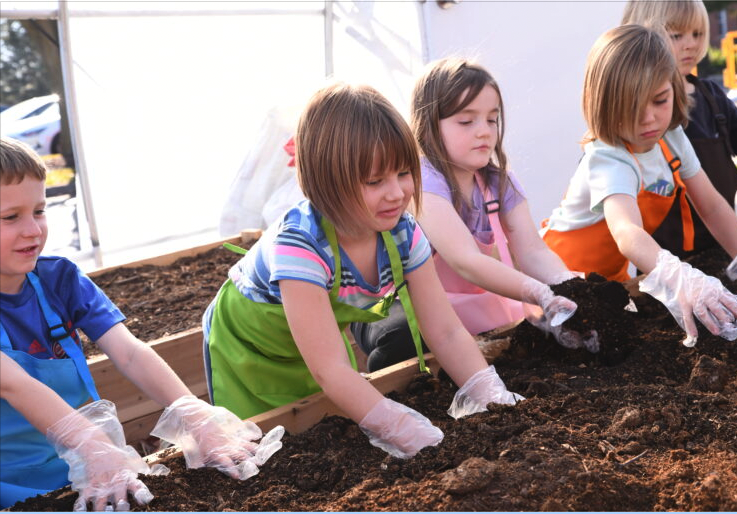On a school lunch menu in rural Goshen, Indiana, is pizza, caprese sandwiches, hard-boiled eggs, and tater tot casserole.
It may seem like nothing special (save maybe the Midwestern flare), except it is. Some of those very ingredients are grown and sourced by students just outside the cafeteria walls.
With the help of a USDA grant, Bethany Christian Schools has grown its farm-to-school (rather, farm-at-school) program to include a greenhouse, garden beds, a 13-head chicken coop, and pear trees. It exists in large part thanks to Tara Swarzendruber, the K-12’s food services and farm-to-school director.
 Photo Credit: Courtesy Bethany Christian Schools
Photo Credit: Courtesy Bethany Christian Schools
“My goal was sort of to transform our menu to reflect more of the local foods that are available here in Indiana,” says Tara Swarzendruber, food services and farm-to-school director at Bethany Christian Schools.
“We’re working to give [students] more tactile experiences,” particularly among younger students, she says. “A lot of them, you know, spend a lot of time on iPads and screens … But this is a very physical experience of experiencing a food, a new food. And then the next week we’ll have it in the cafeteria for them to try there too.”
That experience looks like tending to the gardens and caring for chickens. Some students save seeds to replant; others lay down newspaper and grass clippings to prevent weeds.
Picking peppers, harvesting spinach and lettuce, going to butcher chickens once a year—it’s all in the curriculum. And for good reason, science teacher Amy Thut says.
She once overheard a student say going out into the garden relieves her anxiety. Another was inspired to plant tomatoes at home, meticulously watching them grow. They learn about food systems and how everything is connected.
“Spending time outdoors smelling the fragrant basil plants, feeling the wet soil, listening to insects chirping, seeing butterflies or earthworms, and tasting tomatoes or hot peppers is a full sensory experience,” Thut says.
“Students benefit academically, socially, and emotionally from this time outdoors.”
According to the South Dakota State University Extension, benefits of farm-to-school programs on students and staff include: grade and test score improvements, healthier food choices, more food system knowledge, better self-esteem and morale, and hands-on/experimental teaching and learning.
In the spring, Thut works with her high school environmental science students to plant garden beds. Think cucumbers, tomatoes, peppers, herbs, and flowers, which are simple for cafeteria staff to get on plates, she says.
 Photo Credit: Courtesy Bethany Christian Schools
Photo Credit: Courtesy Bethany Christian Schools
In the summer, a high school student (with the help of grounds staff) will water and weed the gardens, keeping bellies full through October. Then it’s time for the “fresh cart” come wintertime: Buy a meal (or use a free or reduced lunch pass) and get unlimited access to fresh fruit and vegetables all day. On the cart, you might find pea and sunflower shoots grown by sixth graders. Or chive flowers, hand-cut by Swarzendruber.
“My goal has always been, in the cafeteria and as we’ve been transforming [the program], that the educational experience for students doesn’t stop during the lunch period,” Swarzendruber says.
Her pointers for schools, or even just families, looking to follow a similar model: Lean into what you’re excited about, if even just a little. Then, start small.
That’s what Bethany Christian Schools did some dozen years ago: Take a handful of seeds and one small garden, and watch it all grow.
Amy Felegy, Culture Reporter
Amy Felegy (she/her) is a culture reporter at Arts Midwest. She specializes in finding and sharing stories on boundless creativity, and has been a professional journalist for eight years.




